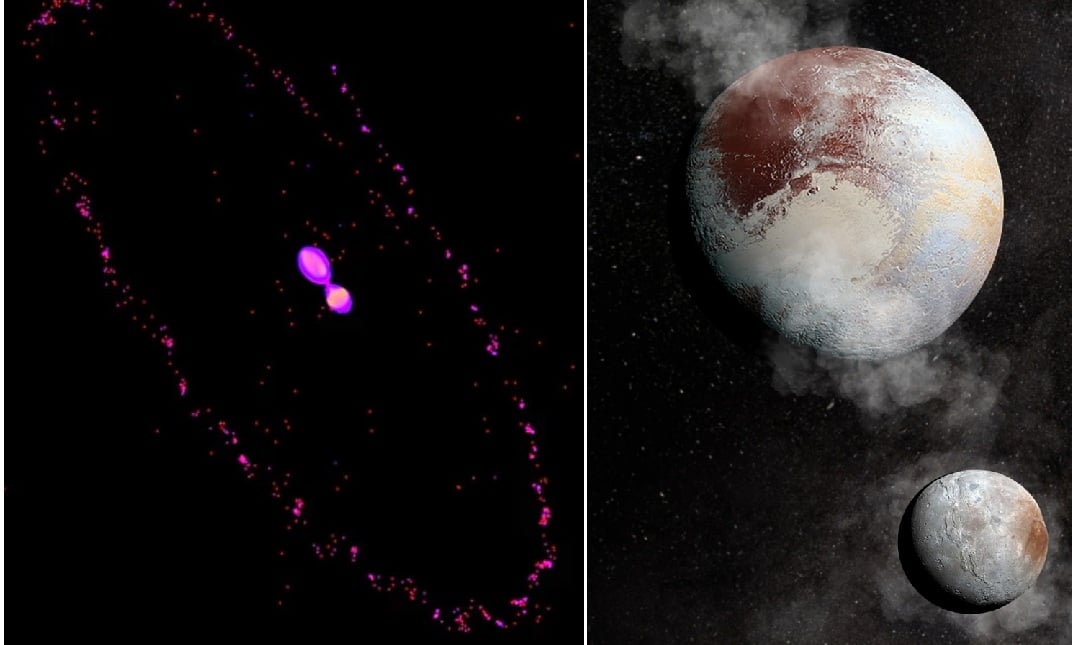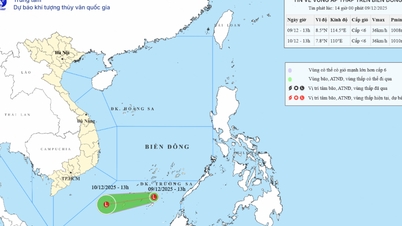American scientists have discovered a completely new type of cosmic collision that helped shape the "ninth planet" and its companion.
New research led by Dr. Adeene Denton from the Lunar and Planetary Laboratory at the University of Arizona (USA), shows that Pluto - the "lost ninth planet" of the solar system - formed in a very different way from its neighboring planets.

Graphical image depicting the state of "Planet 9" and its moon Charon when they were still attached (left) and their current state (right) - Photo: NASA/UNIVERSITY OF ARIZONA
For decades, planetary scientists have theorized that Pluto's unusually large moon Charon formed through a process similar to Earth's Moon.
It was a huge collision, followed by stretching and deformation like two pieces of plastic material sticking together and then pulling apart.
This model fits the Earth-Moon system perfectly, but when applied to the smaller and colder Pluto-Charon, with its mostly rock and ice surface, inconsistencies arise.
“When we looked at the actual strength of these materials, we found something completely unexpected,” says Dr. Denton.
Using advanced collision simulations, the authors found that instead of being stretched during the collision, Pluto and primordial Charon temporarily stuck together like a cosmic snowman.
In that state, they orbited each other for a considerable time before separating while still bound by gravity.
In celestial collision scenarios, two objects either collide and then rapidly separate, or collide and then merge.
The study also found that both Pluto and Charon survived the collision intact, preserving much of their original composition.
This challenges previous models that suggested large deformations and mixing during the collision.
Additionally, the collision process, which included tidal friction as the objects separated, deposited significant internal heat into both bodies. This may have provided a mechanism for Pluto to develop a subsurface ocean where it initially had none.
The discovery has supported NASA's arguments that Pluto should be recognized as a planet.
Evidence collected by NASA shows that this celestial body is capable of possessing underground oceans, even life, and many other factors "more advanced" than dwarf planets.
Pluto was once the ninth planet of the solar system before being "demoted" to a dwarf planet by the International Astronomical Union (IAU) in 2006.
In research recently published in the scientific journal Nature Geoscience , scientists also point out that Charon is relatively intact, including its core and most of its mantle, implying that this moon could also be as ancient and complex as Pluto.
The "ninth planet" and its moon are the Solar System's oddest-sized pair, with radii of 1,200 km and 900 km respectively, making Charon seem too big to be a moon of its parent body.
Source: https://giadinh.suckhoedoisong.vn/hanh-tinh-thu-9-dinh-hinh-theo-cach-khoa-hoc-khong-ngo-den-172250113074650945.htm







![[Photo] Urgently help people soon have a place to live and stabilize their lives](/_next/image?url=https%3A%2F%2Fvphoto.vietnam.vn%2Fthumb%2F1200x675%2Fvietnam%2Fresource%2FIMAGE%2F2025%2F12%2F09%2F1765248230297_c-jpg.webp&w=3840&q=75)

































































![[Photo] General Secretary To Lam works with the Standing Committees of the 14th Party Congress Subcommittees](https://vphoto.vietnam.vn/thumb/402x226/vietnam/resource/IMAGE/2025/12/09/1765265023554_image.jpeg)



































Comment (0)